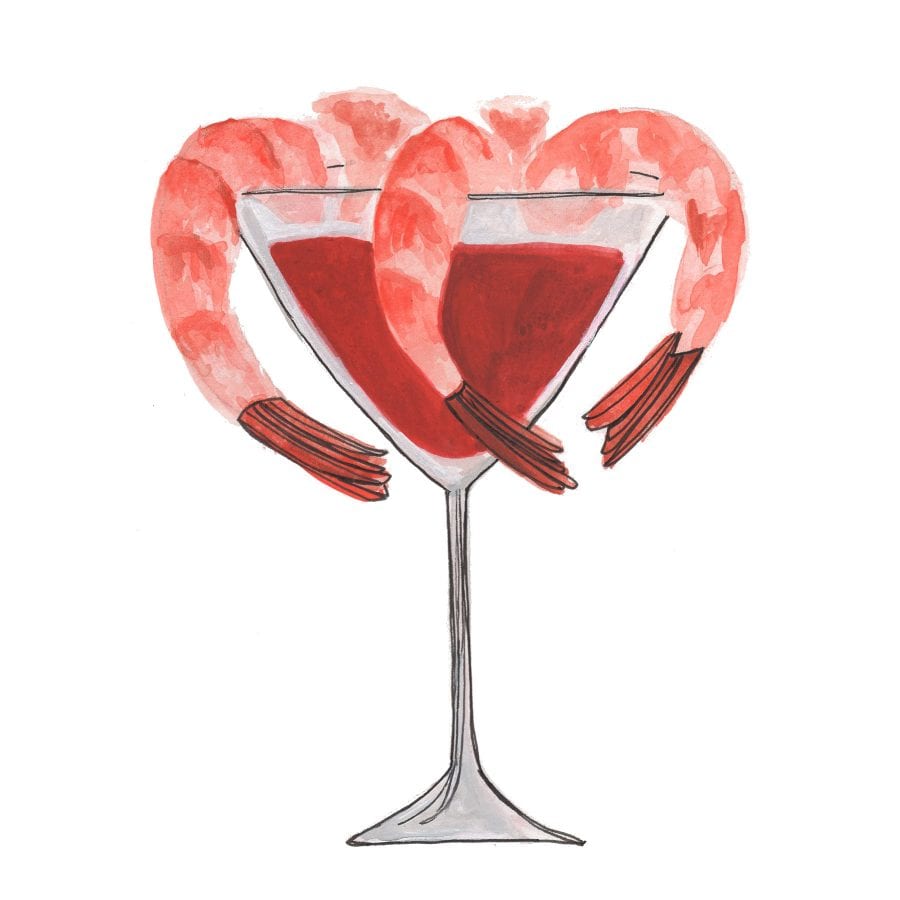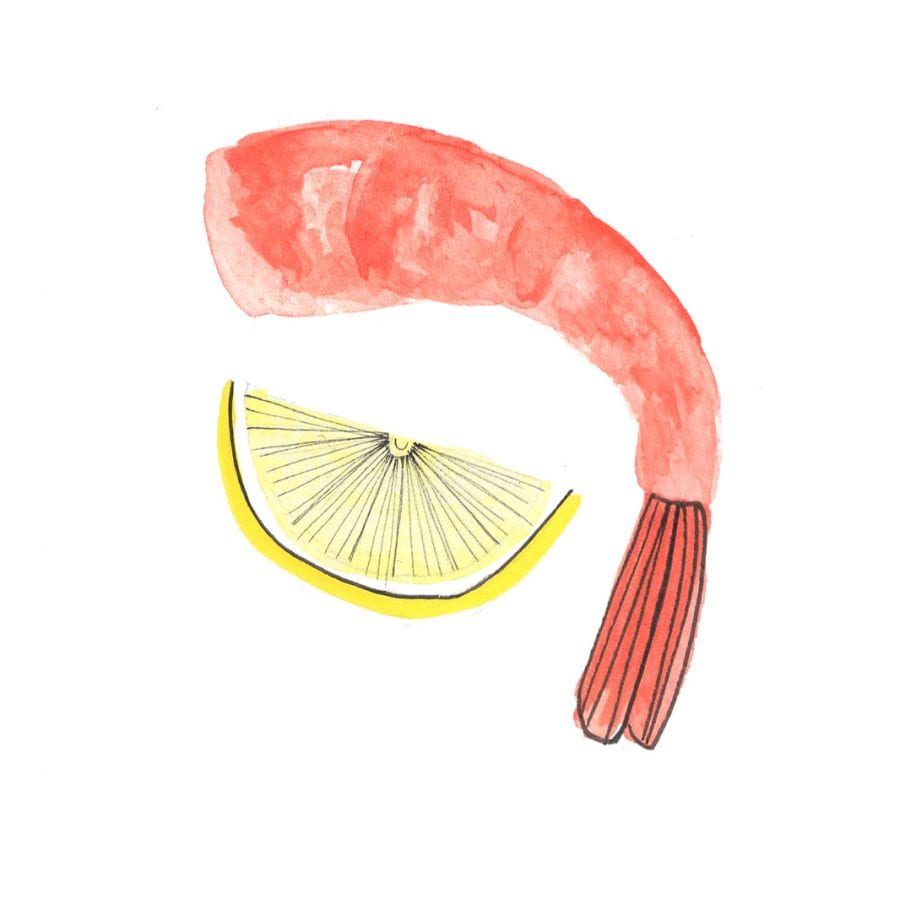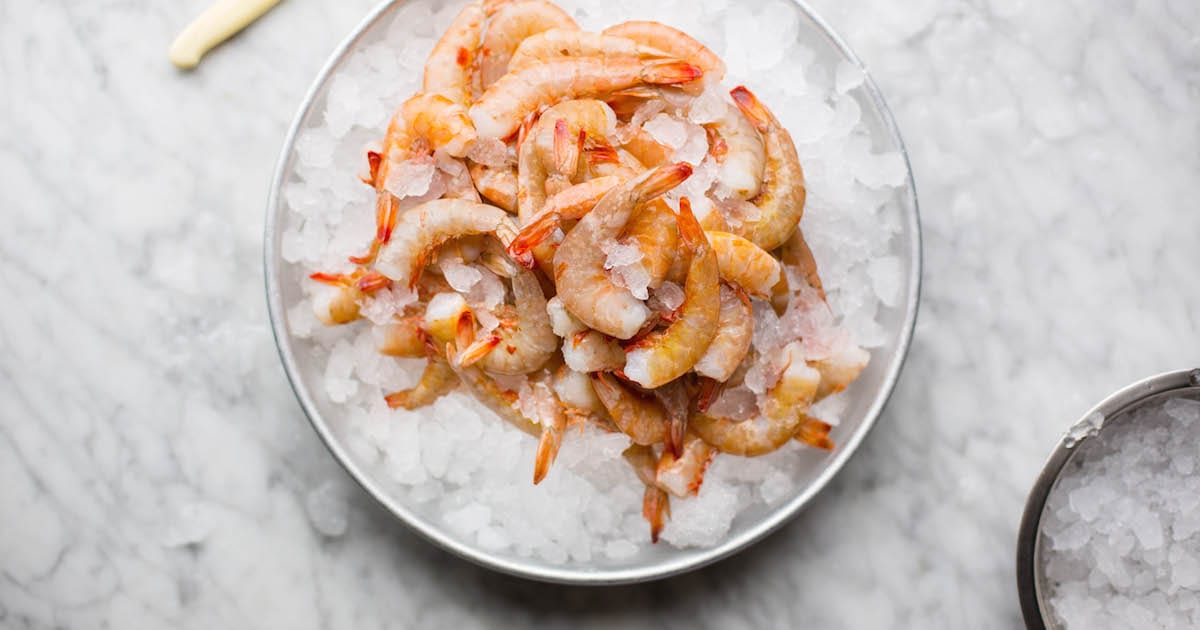A Rare Feast
I loved seafood as a kid, but I didn’t eat a lot of it. I grew up at the edge of the Appalachians in the upstate of South Carolina. The fish we did eat were the freshwater variety—bass, crappie, bream—caught with easy-cast rods in neighborhood ponds and at my Grandfather’s lake cabin in Georgia, rolled in cornmeal, and fried in Crisco till crisp and golden brown.
We sometimes had tuna or salmon, but they were straight from the can, incorporated with macaroni into a creamy casserole, or served cold on a plate with a squeeze of lemon. Fresh shrimp were unheard of in my house, and if I saw them in a restaurant, it was generally in the form of a cocktail—a half dozen boiled and peeled shrimp arranged artfully in a parfait glass and sold for about the price of a sirloin steak. I was never allowed to order such an extravagance.

But I did get to eat all the shrimp I could stand one week out of each a year, when my family rented a house on the North Carolina coast and we spent a glorious week body surfing in the ocean and idling on the back porch. All year long, I looked forward to that week. As May rolled around, the longing swelled into almost physical pain. I would sit in the back of my classroom, barely listening as the teacher rattled on, doodling fishing piers and crab traps in the margins of my notebook, dreaming of the days just around the corner––those long, seemingly endless beach days when there was nowhere to go and no chores to do and plenty of shrimp to eat.
As soon as we arrived and the car was unpacked we made a run inland to one of the little seafood markets that dotted the highway, the kind with rough wood walls and concrete floors and the crisp, pungent odor of seawater and fish. Back at the house, I watched as an aunt filled a black enamel pot three quarters to the top with water, laced it with a generous dose of Old Bay, and brought it to a boil, which took an eternity on those old vacation house stoves. Finally, into the pot went the shrimp, pound after pound of it. They needed less than three minutes to reach bright pink perfection, then were poured steaming into the gigantic plastic colander waiting in the sink.
We ate them out on the screen porch overlooking the salt marsh on a well-worn table covered with old newspapers to catch the juice, dunking the rich, tender, white flesh into bright red cocktail sauce. We ate till the shells were mounded high in the discard bowls, our fingers sticky and bellies full.
As I look back on it now, it seems quaint and unsophisticated that one could be so thrilled by merely peeling and eating shrimp on a back porch, that such a simple one-pot meal could seem more extravagant than the grandest Thanksgiving feast.
In today’s hyper-connected, flash-frozen, mega-farm world, we can eat shrimp anytime and anywhere we choose. They’re strewn atop salads, battered and fried at cut-rate seafood chains, tossed with black bean sauce in endless Chinese-American stir-fries. They’re fancied up in a savory sauce in the now-omnipresent bowls of shrimp and grits, a dish once found only in the South Carolina Lowcountry but now graces fine dining menus in such noted seafood meccas as Nashville and Paducah.
It’s easy to forget that that wasn’t always the case. Back in the 1970s, if you were more than an hour inland from the beach, you couldn’t just walk into a supermarket and find big trays of jumbo shrimp inside a glass case. That changed over the course of my childhood. In 1972, around 275,000 metric tons of shrimp were sold in the US, 175,000 of it landed domestically and the rest imported, mostly from Mexican and Central American waters. Then Asian countries began developing export shrimping industries. In 1988, the year I graduated high school, China became the first Asian country to eclipse Mexico and Ecuador as top supplier of shrimp to the US, and Thailand soon eclipsed China as the volume of imported shrimp exploded. In 1995, 270,000 metric tons were imported. A decade later, that figure had more than doubled to 559,000 metric tons.

Shrimp isn’t such a rare delicacy any more. Improved flash freezing and distribution networks have carried it far inland, where it sells for not much more than at those modest seafood markets down by the beach. Like bananas and white cane sugar, which in the mid-nineteenth century were considered exotic luxuries, shrimp has become just one more commodity in our burgeoning, internationally-sourced pantry. No one makes much of a fuss about eating it anymore.
But perhaps the good things in life are best taken in infrequent but intense doses. These days, I could feast on shrimp just about any time I want, especially now that I live down on the coast in Charleston. Every supermarket has glass cases brimming with shrimp, but I never buy them, even if caught locally. Instead, about once a month between June and January, when the big trawlers are running, I head down to docks at Shem Creek and buy a couple of pounds straight off the boat, the heads still on. I keep them on ice until my biggest pot is boiling and my family has gathered and we dig into a rare, but delightful, seafood feast. It may not taste quite as sweet as the bounty I remember on the back porch of those summer beach houses, but it’s pretty darn close.
share
trending content
-
Recap: TLP x Charleston Wine + Food
by TLP Editors -
Exploring Mississippi: A Quintessential Southern Experience
-
Recipes From Our Summer Issue
by TLP Editors -
Elevate Your AWESOME with an Alpharetta Music Getaway
by TLP's Partners -
9 Noteworthy Tennessee Restaurants | Listen
by Margaret Littman
More From At the Table
-
High Tea, Southern Style
-
10 Leftover Recipes To Clean Out Your Fridge
-
Country Captain Shrimp and Grits
-
10 Nonalcoholic Drinks for Dry January
-
Our Most Popular Recipes of 2023





